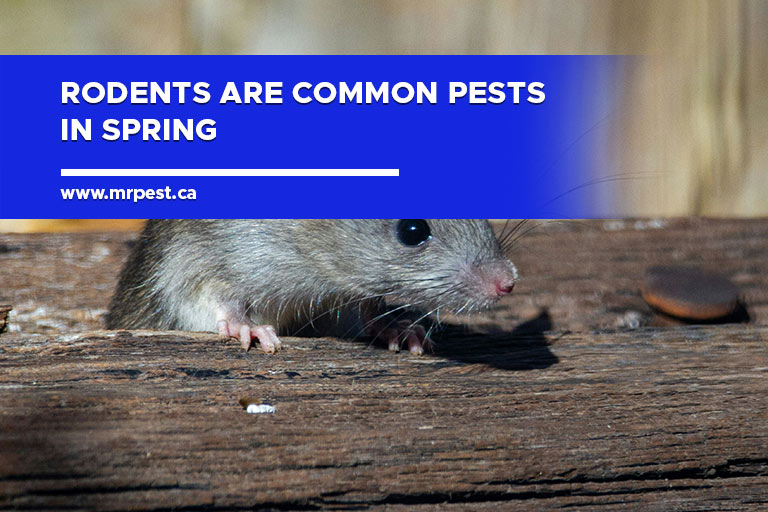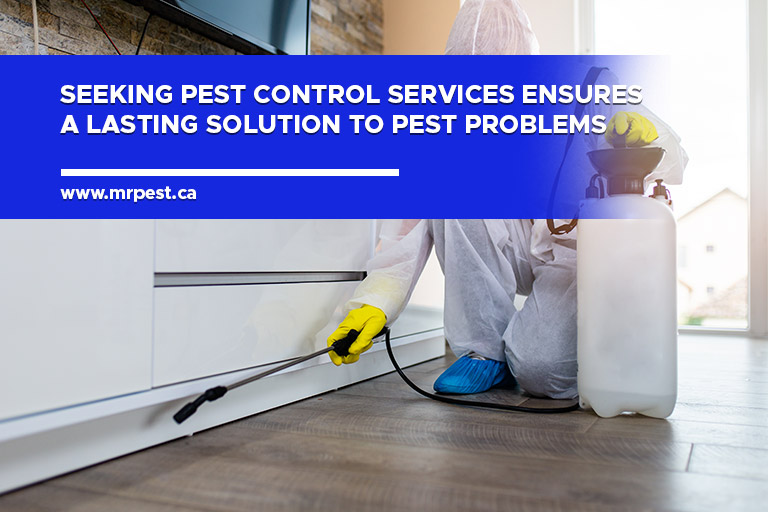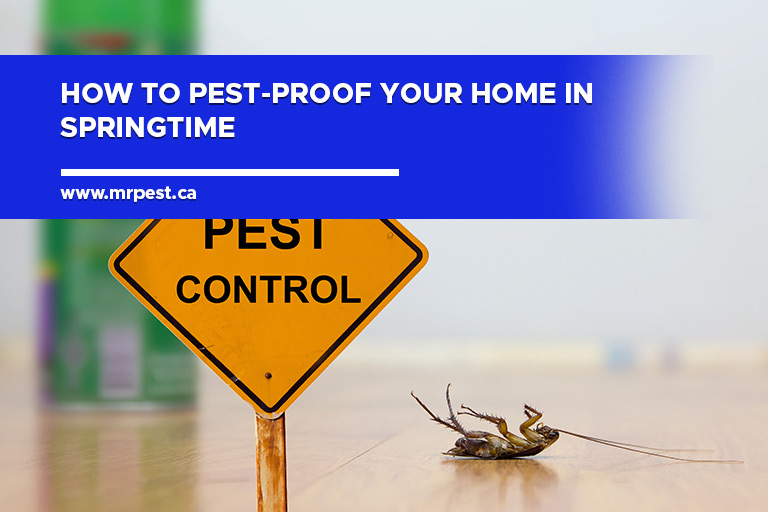As the flowers bloom and the weather warms up, spring brings a renewed sense of vitality to our surroundings. However, along with the joys of springtime come the challenges of pest infestations.
In this guide, we’ll delve into effective pest-proofing techniques for your home during the spring season, ensuring a comfortable and pest-free living environment for you and your family.
Understanding Spring Pests
Common Pests that Emerge During the Spring Season

Springtime welcomes a variety of pests eager to make their presence known, including:
- Ants march into our homes in search of food and shelter, forming trails along kitchen countertops and pantry shelves.
- Termites are silent destroyers that feed on wood and cellulose materials, causing extensive damage to the structure of homes.
- Mosquitoes are pesky bloodsuckers that thrive in standing water and can transmit diseases such as West Nile virus and Zika virus.
- Flies are buzzing nuisances that contaminate food and surfaces with bacteria and pathogens.
- Spiders are creepy crawlers that spin webs in corners and crevices, creating unsightly cobwebs.
- Rodents, including mice and rats, seek warmth and shelter indoors, gnawing on wires and insulation while spreading diseases.
Factors Contributing to Increased Pest Activity in Spring
Several factors contribute to the surge in pest activity during spring:
- Warmer temperatures encourage breeding and activity among pests, accelerating their reproductive cycles.
- Increased moisture levels from spring showers provide ideal conditions for pest survival and reproduction.
- Blooming plants and flowers attract pests in search of food, water, and shelter, leading them closer to residential areas.
Potential Risks and Damages Caused by Spring Pests
Spring pests pose various risks and damages to homeowners, including:
- Contamination of food and surfaces with bacteria and pathogens, posing health risks to occupants.
- Property damage, such as chewed wires, insulation, and wooden structures, compromises the integrity of homes.
- Health hazards, such as bites and allergic reactions, caused by pests like mosquitoes and spiders.
Pest Prevention Methods for Spring
Springtime calls for proactive pest prevention measures to safeguard your home and preserve your peace of mind.
Inspection and Identification
-
Conducting a Thorough Inspection of the Property
Take the time to inspect both the interior and exterior of your home, paying close attention to areas where pests are likely to hide and breed.
-
Identifying Common Entry Points for Pests
Look for gaps around doors and windows, cracks in the foundation, and openings around utility penetrations, as these are common entry points for pests.
Eliminating Entry Points
-
Sealing Cracks, Gaps, and Crevices in the Exterior Walls and Foundation
Use caulking, weatherstripping, and expanding foam to seal any openings, preventing pests from infiltrating your home in springtime.
-
Repairing Torn Window Screens and Door Sweeps
Inspect window screens and door sweeps for tears and gaps, repairing or replacing them as needed to keep pests out.
-
Installing Door Sweeps and Weather Stripping
Install door sweeps at the bottom of exterior doors and weather stripping around windows and doors to create a tight seal, minimizing entry points for pests.
Removing Attractants
-
Proper Garbage Disposal and Sanitation Practices
Keep garbage bins tightly sealed and dispose of food waste promptly to eliminate odours and deter pests from foraging.
-
Storing Food in Airtight Containers
Transfer pantry items into sealed containers to prevent pests from accessing and contaminating your food supply.
-
Cleaning Up Spills and Crumbs Promptly
Adopt a habit of regular cleaning, wiping down surfaces, and vacuuming floors to remove food residues that may attract pests.
Outdoor Maintenance
-
Trimming Vegetation and Shrubs Away from the House
Keep plants and shrubs trimmed back from the exterior of your home, reducing hiding places and pathways for pests.
-
Removing Debris and Clutter from the Yard
Clear away leaf litter, fallen branches, and other debris from your yard to eliminate potential harborage sites for pests.
-
Properly Maintaining Gutters and Downspouts
Clean gutters regularly to prevent water buildup, which can attract pests like mosquitoes and termites, and ensure that downspouts direct water away from the foundation.
Using Pest Control Products
-
Application of Insecticides and Repellents as Necessary
Choose pesticides and repellents formulated for your specific pest problems, applying them according to label instructions to minimize risks to humans, pets, and the environment.
-
Exploring Eco-Friendly Pest Control Options
Consider natural and organic pest control products, such as diatomaceous earth and botanical sprays, as safer alternatives to traditional pesticides.
Seeking Professional Help

-
Hiring a Pest Control Professional for Thorough Spring Pest Management
Entrust the task of pest control to trained professionals who can conduct thorough inspections, identify pest issues, and implement effective treatments tailored to your home’s unique needs.
-
Enrolling in Regular Pest Inspections and Maintenance Programs
Invest in ongoing pest management services to prevent infestations before they occur and address emerging pest problems promptly.
Additional Tips for Keeping Pest Out of Your Home in Spring
Regular Cleaning Routines
Maintain a clean and clutter-free home environment by adopting regular cleaning routines, including vacuuming, dusting, and sweeping, to eliminate food sources and hiding places for pests.
Implementing Preventive Measures Indoors
Take proactive steps to pest-proof your home’s interior, such as sealing cracks and crevices, repairing leaky pipes, and storing firewood away from the house to minimize opportunities for pests to invade your living space.
Monitoring for Signs of Pest Activity
Keeping a watchful eye for signs of pest activity is crucial in maintaining a pest-free home environment. Here are some key indicators to be aware of:
-
Droppings
Pests often leave behind droppings as they move through your home. These droppings can vary in size, shape, and colour depending on the type of pest. For example, rodent droppings are typically small and pellet-shaped, while cockroach droppings resemble tiny black specks.
-
Gnaw Marks
Rodents like mice and rats have a habit of gnawing on various materials, including wood, plastic, and electrical wiring. Look for gnaw marks on baseboards, furniture, and food packaging, as they indicate the presence of rodents in your home.
-
Unusual Odours
Pests can produce distinct odours that may linger in your home. For instance, a musty or pungent smell could be a sign of a mould or mildew problem, often associated with damp conditions that attract pests like cockroaches and silverfish.
-
Nesting Materials
Keep an eye out for nests or nesting materials in hidden areas of your home, such as attics, basements, and crawl spaces. To build their nests, rodents, birds, and insects may use materials like shredded paper, fabric, and insulation.
-
Visible Pests
Sometimes, pests may be visible during the day, especially if they’re searching for food or water. If you spot pests such as ants, cockroaches, or silverfish in your home, it indicates that you have a pest problem that needs to be addressed.
Spring Season Pest Control in Alliston
Proactive pest-proofing measures are essential for maintaining a pest-free home during the spring season and beyond. By implementing these pest prevention methods, you can effectively protect your home from unwanted intruders and enjoy a comfortable living environment year-round.
Remember, prevention is key to effective pest control in Alliston. For professional assistance and expert advice, don’t hesitate to contact us at 1-888-794-PEST. Let us help you safeguard your home against pests and enjoy peace of mind throughout the seasons.



